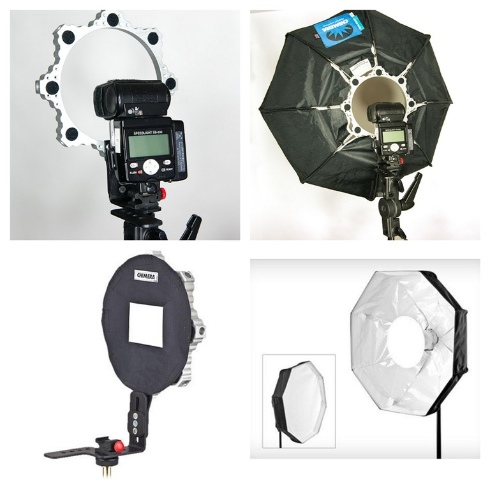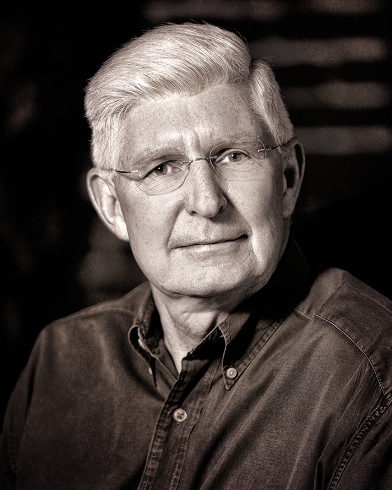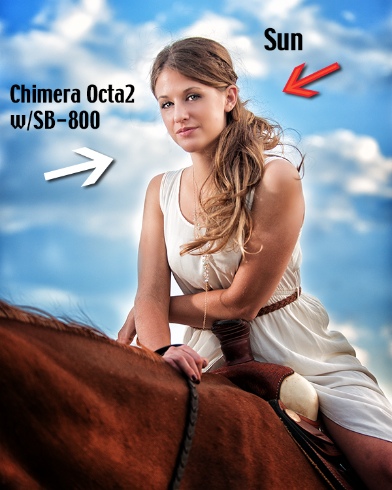

OK – two things you should know:
First, have no financial interest in Chimera, and second, I did not actually buy the product but WON it at Imaging USA in 2012.
But boy I am I glad I won it as it has become one of my MOST valuable tools for location work – inside or out.
Let’s take a look at just what a beauty dish is – what it does and does NOT do. Despite its name, a beauty dish may or may not deliver beautiful light. It can be soft or not –depends on how it is employed. Used as a main light the dish creates a light that tends to be crisp—not really hard, but….well…crisp. It helps to define facial structure or muscle definition.
As with any light, the closer to the subject, the softer that light will be. Back that dish off a bit and that crisp light will become progressively harder. Just as you would expect. The light will have a lightly wider spread and a bit less specular if you use the included diffusion panel. It is the equivalent of the “sock” used on the standard beauty dish.
[blockQuote position="right"]But boy I am I glad I won it as it has become one of my MOST valuable tools for location work – inside or out.[/blockQuote]
Because this dish folds down to almost nothing and weighs just a few ounces, I love this for taking on location—especially outside. The design is far easier to employ than an umbrella and much easier to control/feather. As a bonus, it is far more wind-resistant. Those umbrellas seem to create wind on a calm day! For days with a light breeze, if you do not have an assistant (mom’s do a great job for high school seniors) a small-ish sandbag can give the needed stability.
My observation is that the beauty dish—any dish—gives a light harder than a softbox, but a little softer than an umbrella. Yes, a soft box farther away will be harder than a closer dish, but assuming about the same distance.
I have supplied a few images showing the make-up the Octa2 – the speedring and flash mount, the collapsible 24” dish, the center disc, and the front diffusion panel.
I took an image from the Chimera site to show the back light blocker. I use mine outside a lot so not too concerned about spill out the back. OK, the truth is I cannot find it right now. I should note that you can get speed rings to fit most studio strobes if you prefer to use it with those instead of—or in addition to—your speedlights.
From the time you take the Octa2 out of its carrying bag to complete setup with a speedlight takes just 3 or 4 minutes.
No flimsy construction, either. The speedring is substantial aluminum and the dish is made with pre-bent spokes to ensure the proper shape and the dish material looks like it will stand up to my repeated set-up and tear-down cycles.
Here are some images of the unit.

The included image of the gentleman was taken in his home. He is an author and the image is for the back cover of his upcoming book. Just one light in the Octa2. In this case the speedlight was set to manual and the exposure was set with a flash meter

The images of the young lady with the horse were obviously outside and the Octa 2 is used as a fill. The main light is really the ambient from the sky, the kicker is the sun which is over her left shoulder and off to camera right. The Octa2 is over at camera left about 8 feet or so from the subject. Here, the flash was used in TTL and in order to get the soft background, used in the High-Speed Sync mode to allow an aperture of f/2.8 since the shutter needed to be at 1/1250.
The image of her by the red building has the Sun behind her and at the time of the image it was cloud-filtered and the main light was the speedlight in the Octa2. Here, the f/2.8 gave me shutter speed of 1/2500.


In both cases the trigger was the Pocket Wizard FlexTT5 system. Radio Poppers would have worked as well. For Canon folks, the new 600 series would be another choice. In fact a future blog post about radio triggers might be a good idea. Outdoors in sunlight, the radio system is much more reliable than using a flash as a master.
Until next time,

Feel free to comment or ask any questions.